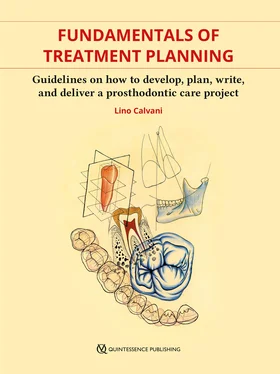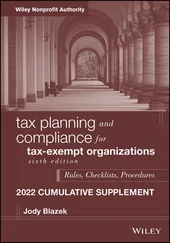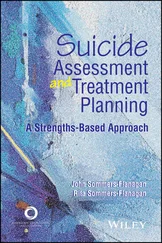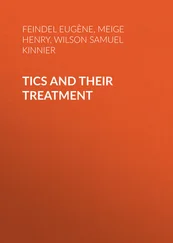In case of emergency
If an emergency occurs and our diagnosis is clear and precise, we have a duty to explain to the patient what the emergency is, how and why it should be addressed, and what the costs of the procedure will be. In that case, always ask for written permission to treat the patient and request the patient’s full compliance and signed agreement before you proceed with the treatment. This applies even in a situation where we know the patient well. It is important to understand that even in the case of an emergency we require a patient’s full compliance via an informed consent document, if possible signed by themselves or, if not possible, by another responsible adult such as a parent or guardian.
The use of the informed consent
The informed consent document needs to be very accurate and even customized in some cases. 6, 27, 41- 50There are various examples of informed consent forms and formats to be found on the internet. However, as every patient is an individual whose data will differ from the next patient, you will find in later chapters many suggestions about what to remember to include in the informed consent document. Please bear in mind that these suggestions are made from the vantage point of many years of experience.
Another thing to bear in mind is that dentistry and prosthodontics do not deal with an immediate threat to life. Therefore, patients can take all the time they need to listen to our proposals for solutions to their problems. They can then ask all the necessary questions in order to understand exactly what we are suggesting. They will then hopefully agree to a treatment plan and sign the informed consent form that we submit to them. 17, 30, 34, 51- 55, 57
Essential aspects of the informed consent document
All informed consent documents pertaining to a specific treatment plan should contain at least the following elements:
1. The patient is fully informed about all the characteristics of the entire treatment. 24, 29, 30, 42, 45, 47, 58- 61
2. The patient has a full understanding of the treatment plan in terms of its diagnosis, prognosis, anticipated benefits, therapy, timing, certainties, risks, consequences, and the need for future controls. 17, 30, 34, 51- 53, 56, 57, 59- 61
3. The patient has been informed of alternative treatment courses and associated risks. 42, 62
4. The patient is fully aware of the risks associated with refusing the recommended procedures. 17, 30, 34, 51- 56, 59- 61
5. The patient is fully aware of any possible temporary incapacitation that may occur during the course of treatment. 17, 30, 34, 51- 56, 59
6. The patient is fully aware of what information the patient is rewriting in front of witnesses (see later), freely accepts the treatment plan, and fully intends to be treated by the clinician in full respect of the professional rules of the dental office. 17, 30, 34, 51- 56, 59- 61
7. The patient has read and discussed the informed consent document sufficiently to know and understand its entire contents and is fully aware of what it contains. If this is the case, the contents of the informed consent document should ideally be rewritten clearly in the patient’s own handwriting (see later). 2, 18, 28
8. If the patient is unable to fulfill the above point (7) for any reason, another person should be appointed in the patient’s stead to do so in front of witnesses; this person should be able to take responsibility for the patient’s situation and health. 3, 7, 11, 29, 39, 49, 50, 58
9. Finally, the informed consent form should be signed, together with the signatures of one or more witnesses such as a relative of the patient, an office secretary or a chair assistant. 2, 6, 30, 39, 41, 52, 56
If all these aspects of the informed consent document have been honored, the intellectual honesty, professional integrity and empathetic intentions of the clinician will be immediately clear to anyone who may consult the document later in the event that they may want to prove negligence in some way. 2, 6, 14, 15, 19, 30, 36, 39, 41, 52, 55, 56
It is important to note that any procedure performed in the absence of informed consent is liable to prosecution in a court of law and could be construed as intentionally inflicting physical harm on a patient.
Therefore, it is strongly advised that an informed consent for any prosthodontic treatment plan should be rewritten in the patient’s handwriting. In other words, the document should be copied out in full by the patient. The reason for this is that it has transpired on a few occasions that simply signing an informed consent without rewriting it is not sufficiently secure. Instead, asking patients to rewrite it in their own handwriting is a better guarantee for the dental office (or a court of law) that they have understood it, are completely conscious of the treatment details, and are willing to be treated without further doubt.
Finally, the patient should sign the informed consent document in front of one or more witnesses, who will countersign it afterwards. After the document has been signed by all the relevant parties, one copy must be given to the patient. The original document must remain in the safekeeping of the dental office where it is stored as a confirmation and a warranty for both the clinician and the patient.
Digital technology and informed consent documents
Although the advent of computerized technologies and the digitization of dental office documents has optimized the storage and management of patient documents and data, in the case of the treatment plan and informed consent it is still strongly advisable to retain hard copies of all original documents. This eliminates any possible questions that may arise later concerning possible alteration of these documents (ie, if they exist only as computer files), and eliminates any possible legal doubts about the honesty of the professionals and the dental office staff, which may create problems in a court of law. 2, 6, 14, 15, 19, 30, 39, 41, 52, 55, 56Therefore, when it comes to signed treatment plans and informed consent documents, it is still better to have the original hard copies on file in our dental offices. 52, 56
References
1.Cambridge Dictionary. Cambridge University Press. https://dictionary.cambridge.org/dictionary/english/treatment/. Accessed 15 March 2019.
2.Öwall B, Käyser AF, Carlsson GE. Prosthodontics: Principles and Management Strategies. London: Mosby-Wolfe, 1996.
3.Rosenstiel SF, Land MF, Fujimoto J. Contemporary Fixed Prosthodontics, ed 3. Mosby Elsevier, 2001:59–76.
4.Kluger AN, DeNisi A. The effect of feedback interventions on performance: a historical review, a meta-analysis, and a preliminary feedback intervention theory. Psychological Bulletin 1996;119:254–284.
5.Brecker SC. A practical approach to extensive restorative dentistry. J Prosthet Dent 1954;4:6:813.
6.Nazarko L. Consent to clinical decisions when capacity is absent. Part 1: Making decisions. Nurs Manag (Harrow) 2004;10:18–22.
7.Rich B, Goldstein GR. New paradigms in prosthodontic treatment planning: a literature review. J Prosthet Dent 2002;88:208–214.
8.Allen PF, McMillan AS, Smith DG. Complications and maintenance requirements of implant-supported prostheses provided in a UK dental hospital. Br Dent J 1997;182:298–302.
9.Bowley JF, Stockstill JW, Attanasio R. A preliminary diagnostic and treatment protocol. Dent Clin North Am 1992;36:3:551–568.
10.Hemmings KW, Schmitt A, Zarb GA. Complications and maintenance requirements for fixed prostheses and overdentures in the edentulous mandible: a 5-year report. Int J Oral Maxillofac Implants 1994;9: 191–196.
11.Kazis H. Functional aspects of complete mouth rehabilitation. J Prosthet Dent 1954;4:833–841.
12.Lewis S. Treatment planning: teeth versus implants. Int J Periodontics Restorative Dent 1996;16:366–377.
Читать дальше












